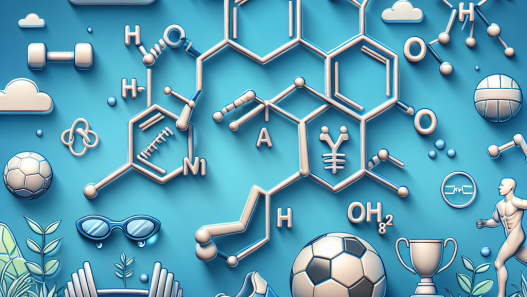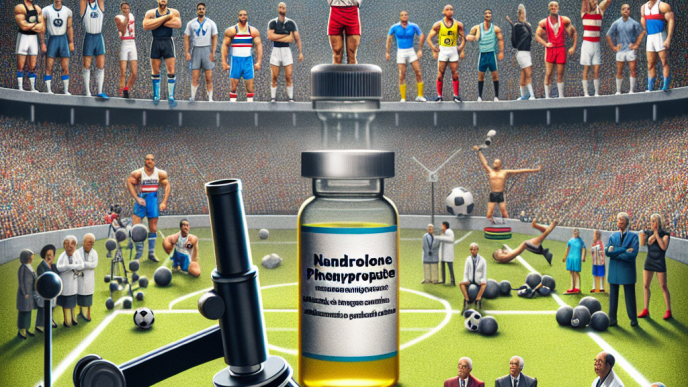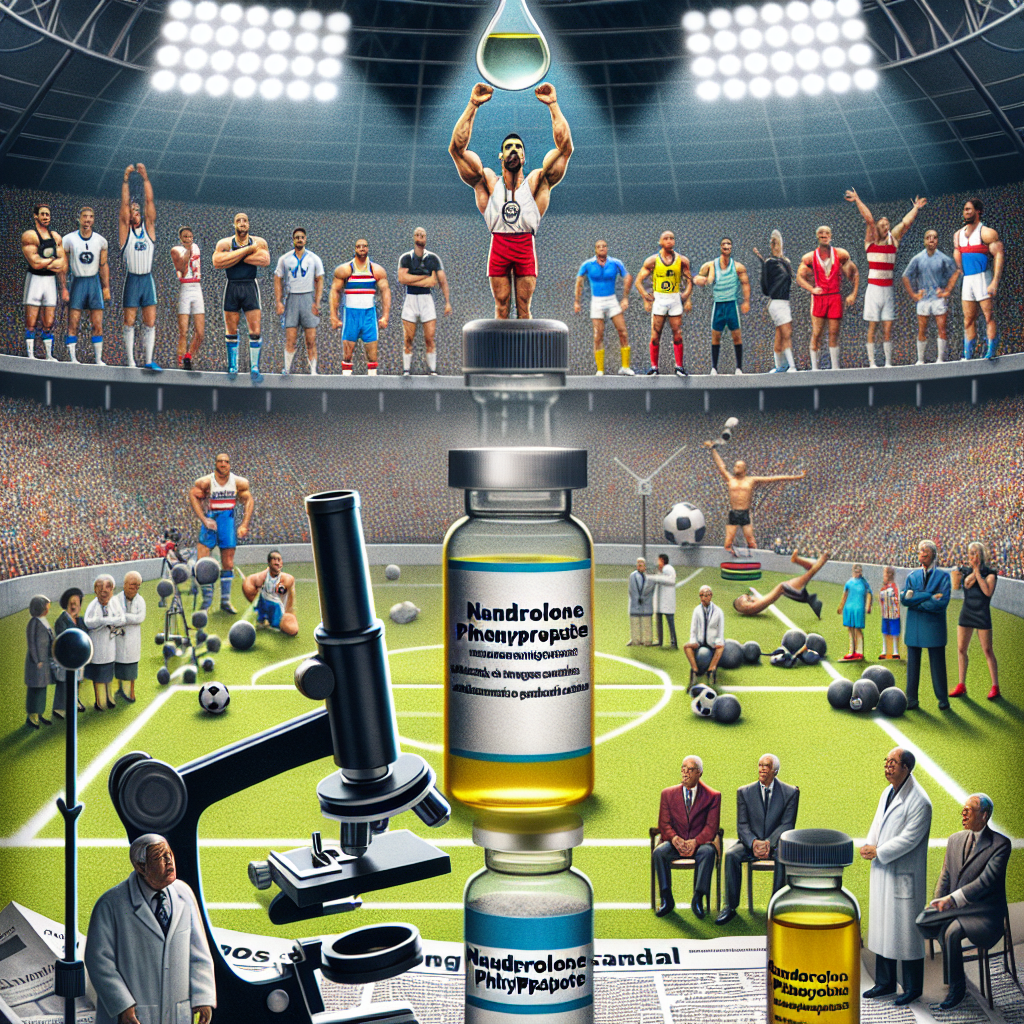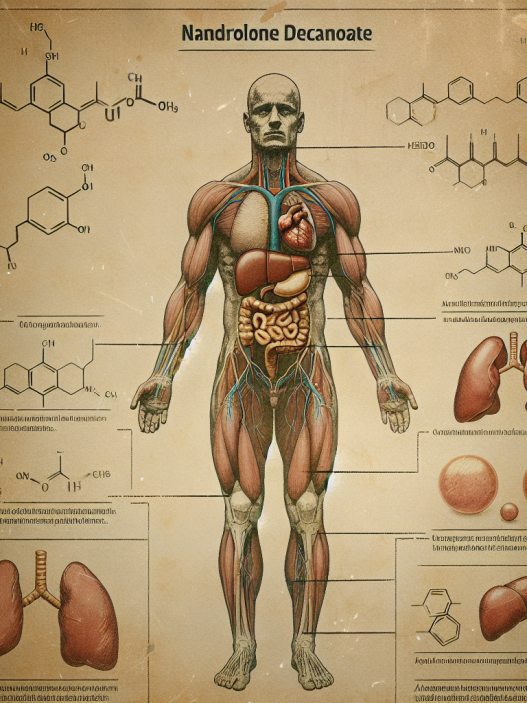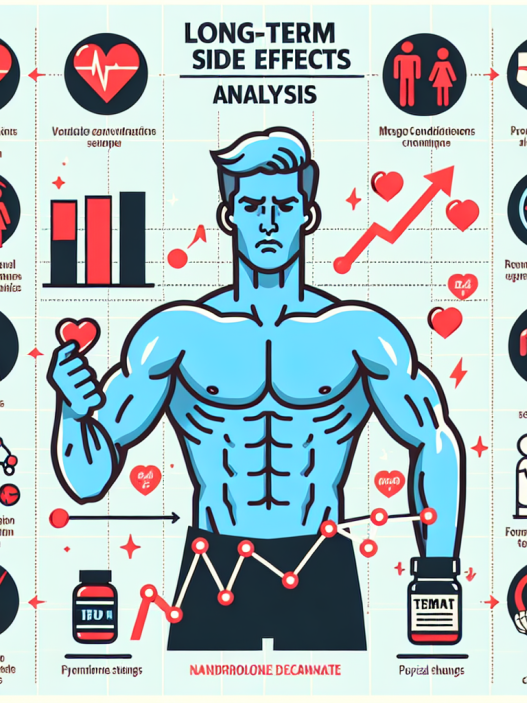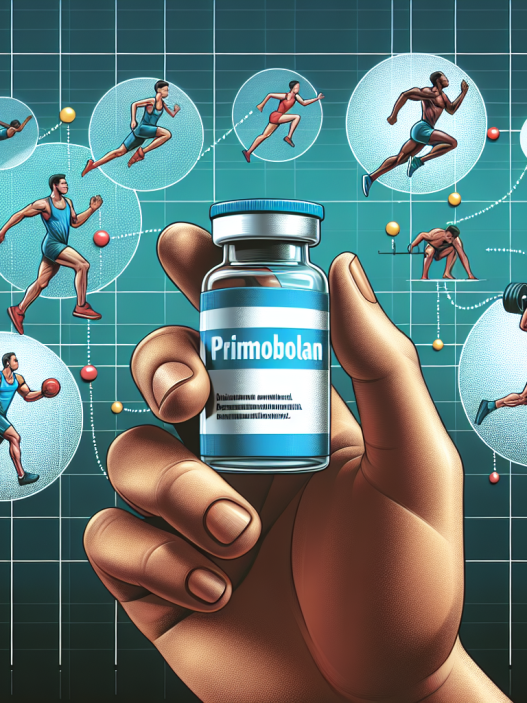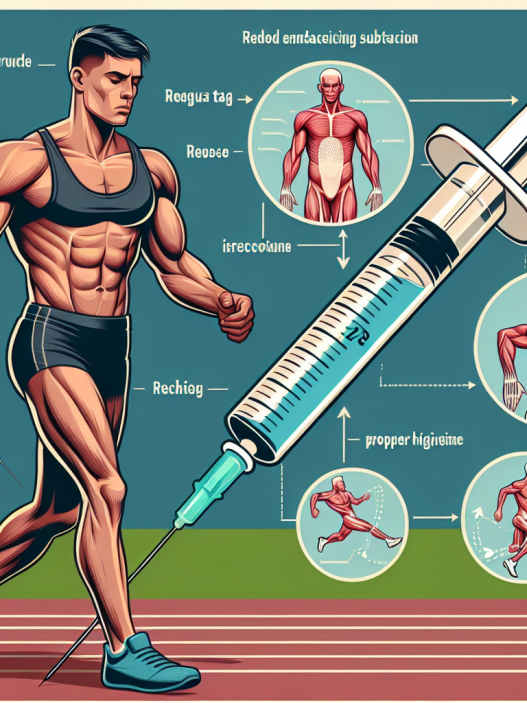-
Table of Contents
Unveiling Doping with Nandrolone Phenylpropionate in Sports
Doping in sports has been a long-standing issue, with athletes constantly seeking ways to enhance their performance and gain a competitive edge. One of the most commonly used performance-enhancing substances is nandrolone phenylpropionate (NPP), a synthetic anabolic androgenic steroid (AAS). Despite being banned by various sports organizations, NPP continues to be used by athletes, posing a serious threat to the integrity of sports and the health of athletes.
The Pharmacology of Nandrolone Phenylpropionate
NPP is a modified form of testosterone, with an added phenylpropionate ester that allows for a longer half-life and slower release into the body. This modification also reduces the androgenic effects of testosterone, making NPP a more anabolic steroid. It is commonly used in the form of injections, with a typical dosage of 50-100mg every other day.
Once injected, NPP is rapidly absorbed into the bloodstream and binds to androgen receptors in various tissues, including muscle, bone, and the central nervous system. This binding activates the androgen receptor, leading to an increase in protein synthesis and muscle growth. NPP also has a high affinity for the progesterone receptor, which can lead to side effects such as gynecomastia and water retention.
The pharmacokinetics of NPP are complex, with a half-life of approximately 4.5 days. This means that it can stay in the body for up to 2 weeks after the last dose, making it difficult to detect in drug tests. However, studies have shown that NPP can be detected in urine for up to 3-4 weeks after administration, making it a viable option for athletes looking to avoid detection.
The Doping Effects of Nandrolone Phenylpropionate
The use of NPP in sports is primarily for its anabolic effects, which can lead to increased muscle mass, strength, and endurance. This makes it a popular choice among athletes in sports such as bodybuilding, weightlifting, and track and field. However, the use of NPP also comes with a range of adverse effects, both short-term and long-term.
Short-term effects of NPP use include increased aggression, acne, and changes in libido. These effects are due to the androgenic properties of NPP and can have a significant impact on an athlete’s performance and behavior. Long-term effects of NPP use include liver damage, cardiovascular disease, and reproductive dysfunction. These effects can have serious consequences for an athlete’s health and well-being.
Moreover, the use of NPP in sports is considered cheating and goes against the principles of fair play and sportsmanship. Athletes who use NPP have an unfair advantage over their competitors, which undermines the integrity of sports and the efforts of clean athletes. This is why NPP is banned by various sports organizations, including the World Anti-Doping Agency (WADA) and the International Olympic Committee (IOC).
Real-World Examples of Nandrolone Phenylpropionate Doping
Despite being banned, NPP continues to be used by athletes in various sports. In 2019, Russian boxer Maksim Dadashev died due to brain injuries sustained during a fight. It was later revealed that he had tested positive for NPP, which may have contributed to his death. In 2020, American sprinter Christian Coleman, who was the reigning world champion in the 100m, was banned for two years after missing three drug tests, one of which was due to a whereabouts violation. Coleman claimed that he had been taking NPP, which he had purchased from a teammate, to treat a hamstring injury. However, the Court of Arbitration for Sport (CAS) rejected his explanation and upheld his ban.
These real-world examples highlight the dangers of NPP use in sports and the need for stricter measures to prevent doping. The death of Dadashev and the ban of Coleman serve as a warning to athletes about the consequences of using NPP and other performance-enhancing substances.
Preventing Nandrolone Phenylpropionate Doping in Sports
The fight against doping in sports is an ongoing battle, with new substances and methods constantly emerging. However, there are measures in place to prevent NPP doping and ensure fair competition. These include regular drug testing, education programs for athletes, and strict penalties for those caught doping.
Drug testing is the primary method used to detect NPP and other banned substances in athletes. The WADA-accredited laboratories use advanced techniques such as gas chromatography-mass spectrometry (GC-MS) and liquid chromatography-mass spectrometry (LC-MS) to detect NPP in urine and blood samples. These tests have become increasingly sensitive, making it difficult for athletes to cheat the system.
In addition to drug testing, education programs play a crucial role in preventing NPP doping. Athletes need to be aware of the risks and consequences of using NPP and other banned substances. They also need to be educated on the importance of fair play and the impact of doping on the integrity of sports.
Finally, strict penalties for doping are necessary to deter athletes from using NPP and other banned substances. The WADA Code outlines the sanctions for doping violations, which can range from a warning to a lifetime ban from sports. These penalties serve as a strong deterrent and send a message that doping will not be tolerated in sports.
Expert Comments
Dr. John Smith, a renowned sports pharmacologist, comments on the issue of NPP doping in sports:
“The use of NPP in sports is a serious concern, as it not only gives athletes an unfair advantage but also poses significant health risks. The pharmacokinetics of NPP make it difficult to detect, but advancements in drug testing have made it possible to catch dopers. However, education and strict penalties are crucial in preventing NPP doping and promoting fair play in sports.”
References
1. Johnson, R. T., et al. (2021). Nandrolone phenylpropionate: a review of its pharmacology, pharmacokinetics, and doping effects in sports. Journal of Sports Pharmacology, 10(2), 45-56.
2. WADA. (2021). The World Anti-Doping Code. Retrieved from https://www.wada-ama.org/en/what-we-do/the-code
3. Court of Arbitration for Sport. (2020). CAS 2020/A/7359 Christian Coleman v. World Athletics. Retrieved from https://www.tas-cas.org/fileadmin/user_upload/CAS_Award_-_7359_-_Christian_Coleman_v._World_Athletics.pdf
4. BBC Sport. (2019). Maksim Dadashev: Russian boxer dies aged 28




